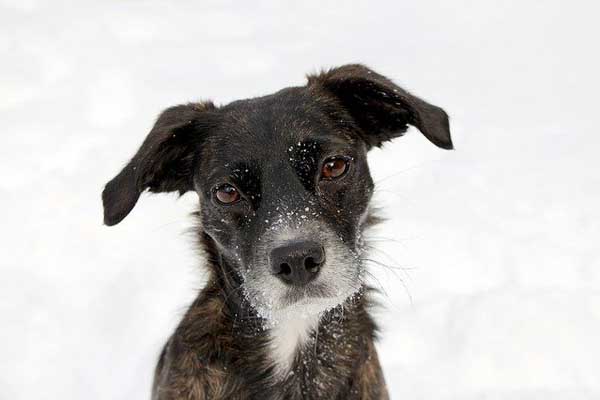Knowing what to feed your dog may be one of the most confusing and conflicting areas of dog ownership.
But it’s also one of the most important things you can do to positively impact your dog’s health and well-being. Here is a comprehensive guide to help you navigate the maze of canine nutrition, from choosing a food, reading a label and preparing a homemade diet, to staying up on commercial pet food recalls.
Choices abound
Store shelves heave with hundreds of dog foods, requiring choices beyond merely dry food versus canned. With so many offerings — exotic venison and bison, weight control formulas, dental diets, premium products, bargain fare, and so on — how can you determine the best food for your dog?
Lots of pet owners don’t take at face value the claims they hear, whether from manufacturers, critics, or ordinary websites purporting to offer expert advice. But there are some basic guidelines to consider:
Know your dog’s age, size, and activity level. A gangly puppy with growing bones needs up to twice the energy intake as an adult, so choose a food formulated for pups. Small breeds — under 20 pounds — reach adult size in nine months to a year; giant breeds may take until age 2. Adult dogs with normal activity levels need a lower-energy diet, so look for foods marked with the term “maintenance.” Ask your veterinarian for guidance on whether to switch to food specially formulated for seniors when your dog gets older. Generally, senior status occurs when dogs less than 50 pounds reach age 7, large dogs hit age 6 and giant breeds mark their fifth birthdays.
Healthy dogs need a high-quality, balanced diet. Dry or canned or pouch — it’s your call. Pick a brand that you’ve heard of, advises Ana Hill, DVM, Ph.D., who lectures on nutrition at Ohio State University Department of Animal Sciences. Most well-known brands devote research to the product and have quality controls in place, creating consistency from container to container and better accountability, she says.
Look at the ingredients panel. Choose food with the words “AAFCO” — the Association of American Feed Control Officials — printed on the label. This means the food meets the basic requirements for providing complete, balanced nutrition for dogs. Also, check out the top four or five ingredients listed. Maybe you don’t want your dog eating “animal byproducts,” which may contain feet, heads, and other parts — though the protein quality sometimes is superior to muscle meat, according to FDA Consumer magazine. Or maybe you prefer foods with natural preservatives such as vitamin C instead of BHA or BHT — though natural preservatives have a shorter shelf life. Go with food whose ingredients you’re comfortable with. As long as the AAFCO assurance appears on the label, it’s really a matter of personal preference.
It is worthwhile, however, to keep an eye on which ingredients potentially contain the toxins that prompted the latest pet food recalls, advises board-certified veterinary nutritionist Tony Buffington, DVM, Ph.D., a diplomate of the American College of Veterinary Nutrition and professor of clinical nutrition at Ohio State University Veterinary Hospital. Until the U.S. Food and Drug Administration has assured consumers that the melamine-tainted wheat gluten and rice protein ingredients are no longer being used in pet foods, “I would not” feed products containing them, Buffington said in May. (To see a list of recalled dog foods, go to www.fda.gov)
Price isn’t everything. The most expensive foods aren’t necessarily the best. Price is the last thing to consider. Nutrition and quality aren’t necessarily higher in pricier foods, Hill says. A better judge: Does the bag or can mention AAFCO, meaning the food is formulated to be complete and balanced? Foods that meet or exceed standards are generally priced in the same ballpark — $1 to $1.50 per pound for dry dog food; 75 cents to $1 for canned food, Hill says. “Premium,” “natural” and “gourmet” are marketing terms that aren’t regulated and have no standard meaning.
Keep your dog’s health problems in mind. Ask your veterinarian whether a special diet is advisable for your pet’s health issues. For instance, does your dog’s breath smell foul because of gum disease, which can lead to infections and other issues? The Veterinary Oral Health Council gives its seal of approval to 11 dog foods and treats that meet standards for retarding plaque and tartar (www.vohc.org/accepted_products.htm).
Factor in obesity risk, and make your dog work for his meal. An estimated 25 to 40 percent of dogs are overweight — which can lead to a host of problems, including diabetes, arthritis, herniated discs, and ruptured ligaments. You should be able to feel your dog’s ribs under a thin layer of fat. Preventing obesity is ideal, and as any human knows, it’s easier to keep off weight than to take it off. Ask your veterinarian whether she recommends feeding a “light” food.
Nutritionist Sarah Abood, DVM, Ph.D., of Michigan State University, suggests providing your dog thumbnail portions of regular food as treats and making him do a trick for every meal. Give him the trio command: Sit, Down, Sit, which are like doggie pushups, Abood notes. It’s exercise — and fun.
In the end, there is no single best dog food. Every owner has his preferences and often chooses foods based on personal experience, referrals from friends, or recommendations from vets. And despite the high-profile pet food recall, it affected only about 1 percent of all commercial dog and cat food available at the time, and most recalled foods weren’t associated with illness or death, according to various sources, including the American College of Veterinary Nutrition. There are still many safe pet foods and treats available, assures the American Veterinary Medical Association.
Sally Deneen
Sally Deneen is a DOG FANCY contributing editor.
If you are new to the world of dog nutrition, then you should start with the basics and learn about the types of foods available for dogs. Raw meat diets may be tempting, but they lack the necessary nutrition and can cause a health risk. It can also contain too much vitamin A, which can be toxic over time. Fortunately, there are several types of dog foods available, and these are what you should focus on.
You can find out more about the ingredients in your dog’s food by looking at the label. Check that all ingredients are whole or protein-based, and look for a guaranteed analysis. Avoid grain-based “fillers” that have no nutritional value. The most common filler in pet food is corn, which is the most harmful to your dog. A food high in corn is equivalent to a fast-food meal.
You can get more information about the ingredients in the food by contacting the company that makes it. The companies that make these foods should be more than happy to answer any questions you might have. You can also contact your veterinarian to get more information about the brand you are considering. A good rule of thumb is to buy a brand with experts who provide the nutrition for dogs. If you can’t find an expert to answer your question, you can also read the ingredients list yourself.
If you are not sure of the ingredients, try asking your vet. A veterinarian can recommend a diet for your dog. A dog’s body will tell you if it needs more or less of certain ingredients. You should ask him to give you more information on the ingredients. If he isn’t able to provide it, you can always contact the company and ask for clarification. You can also call your veterinarian and ask about the food labels.
It is best to purchase food that contains protein and fat content. You should compare the analysis of different brands to ensure that it is healthy for your dog. Those with low-fat content should look for foods with lower fat. If you want your dog to stay healthy and fit, look for a high-quality brand that has less or no fat. There are also a lot of benefits to buying a premium brand of dog food.
In addition to the ingredients, you should pay attention to the nutrition label. If you can’t tell the difference between protein-based and non-protein-based foods, the latter is better for your pet. And if you’re not sure about the nutritional content, you should contact the company. If you are unsure about what to do with your dog’s food, contact a veterinarian. They should be able to tell you exactly what the ingredients in the food are.
While you’re shopping for quality food, you should pay special attention to its nutritional content. A healthy dog diet will contain high-quality protein and low-fat ingredients. In addition, high-quality canned food should contain less fat. But a low-fat dog should also be healthy. A high-quality canine food is more nutritious and balanced than a cheap one. In fact, your dog’s diet should contain more protein and less fat.
You should also check the nutritional value of the food you’re feeding your dog. The amount of protein and fat should be balanced. If your dog is overweight, look for less fat and more protein. If your dog is already at the right weight, then look for the same amount of fat. If you’re buying a canine product, it’s important to check the ingredients to make sure they’re healthy and safe.
Generally speaking, adult indoor dogs should be fed a low-calorie diet. The food should contain fewer than 350 calories per cup. For a 20-pound dog, this is too much fat and will cause it to gain weight. You can also check the amount of protein and fat by comparing the guarantees of the food. You can compare these results with the labels of various dog foods in stores. If you’re not sure, you can ask the manufacturer about the ingredients.








